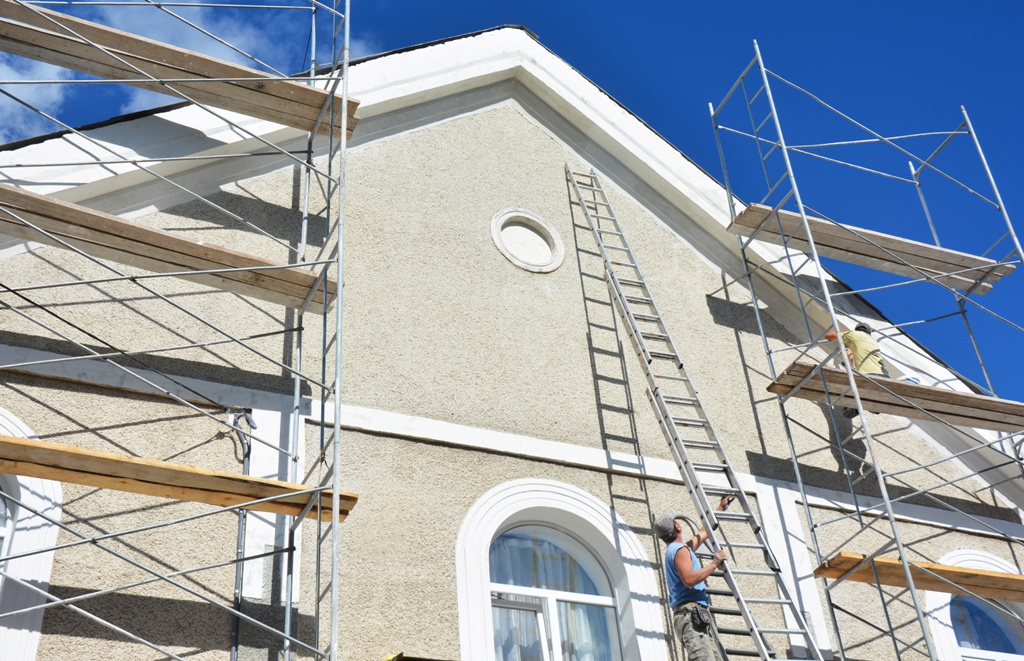Homes today come in various sizes, shapes, and construction. On one street alone you can find one home built of stones, one with siding, one constructed of brick, and another detailed with wood. Each one has its own advantages and disadvantages. If you’re planning to buy or sell a house, how it is designed can play a great role in the actual home value.
Using stucco can significantly increase your home value in numerous ways. Stucco carries many benefits over the more traditional siding option. A lot of home construction builder prefer to use stucco when building to make improvements and add to the texture and composition of a home’s exterior. If you’re planning on moving into a new home soon, it may be quite advantageous to research the difference between stucco and siding to see what your home value could be.
What Is Stucco?
Stucco is a home construction material that is formed with aggregates, water, and some kind of binder. It’s generally applied wet, and then hardens to a very hard plaster. It’s primarily used for molding or texturing, as well as for coating walls. Applying stucco can give any smooth surface a rough texture if utilized correctly. Stucco can also serve as a creative material for sculpturing and siding in architecture.
Compared to certain types of siding like vinyl, stucco can be a lot easier and more cost-effective to repair. Vinyl repairs often involve completely removing the entire panel. Stucco repairs, on the other hand, typically just require the application of an acrylic latex coating. However, for major damages that require extensive repair work, it’s still a good idea to hire stucco repair Denver contractor to ensure great results.
What Are The Advantages Of Stucco Over Siding?
Here are some of the advantages of using stucco in your home instead of siding:
1. Insulation
One of the biggest advantages of stucco over siding is the amount of insulation that it can give a house. Stucco provides three levels of insulation per installation. With a more traditional stucco treatment, the first layer of stucco is generally just a scratch coat. This acts as a barrier from water and provides a base for a insulation board. The second layer is then applied as a base coat which helps to reinforce the fiberglass mesh needed for insulation. The last layer is the actual finished coat. It can be colored to the homeowner’s specifications.
Siding doesn’t provide a deep insulation unless it is paired with the interior finishes of drywall. It’s generally a lighter material used to deflect heat or cold from a home, not necessarily insulate.

2. More Options
Stucco is actually available in various textures and colors. As the homeowner, when adding texture to the exterior of your home, you can guarantee more positive responses regarding the overall appearance of your residency. Because stucco is applied, it is easier to pick a particular texture that’s best suited for you and your home. The color may also be personalized to your own discretion. How unique is it to customize not only the shade of color added to your house, but its texture too?
Stucco can also be added to a masonry wall to enhance its appearance. Since the wall is already inherently scratch-proof, there’s no need to apply a scratch, and you can just proceed with applying two coats of stucco. A Denver masonry repair contractor can help you out with this.
Siding comes in some assorted colors, but not with many varied tones. In most cases, there are only a few options for a homeowner to select, and there are even less different textures.
3. Cost
Stucco can change the look of your whole house without making any extreme changes to the structure. With its easy installation, stucco can change the façade of your home and leave you better than you were before. Because the last application of stucco is your finishing coat, there is no extra maintenance needed, therefore there is no need to repaint your house either. This can save you bundles of money and time regarding upkeep in the future.
Your energy bills will also feel the difference. The three levels of insulation that stucco provides prevents any extra air flow from infiltrating your walls. This will keep you from having to crank up the air conditioner in the summer and blasting the heat during the winter.
Only a few kinds of siding have been known to be energy-efficient. Wood siding happens to be one of the best. However, applying wood siding to your home will become expensive because it means a whole remodeling of your home. The costs there are tremendous, along with the time allotted for such a project to be completed.
Conclusion
When it comes to increasing the value of your home, stucco is a much better choice than siding. For cost, style, and great insulation, stucco comes in first above many other choices for home exterior design. With all the wonderful attributes that stucco offers, it is a worthwhile option for any home.






